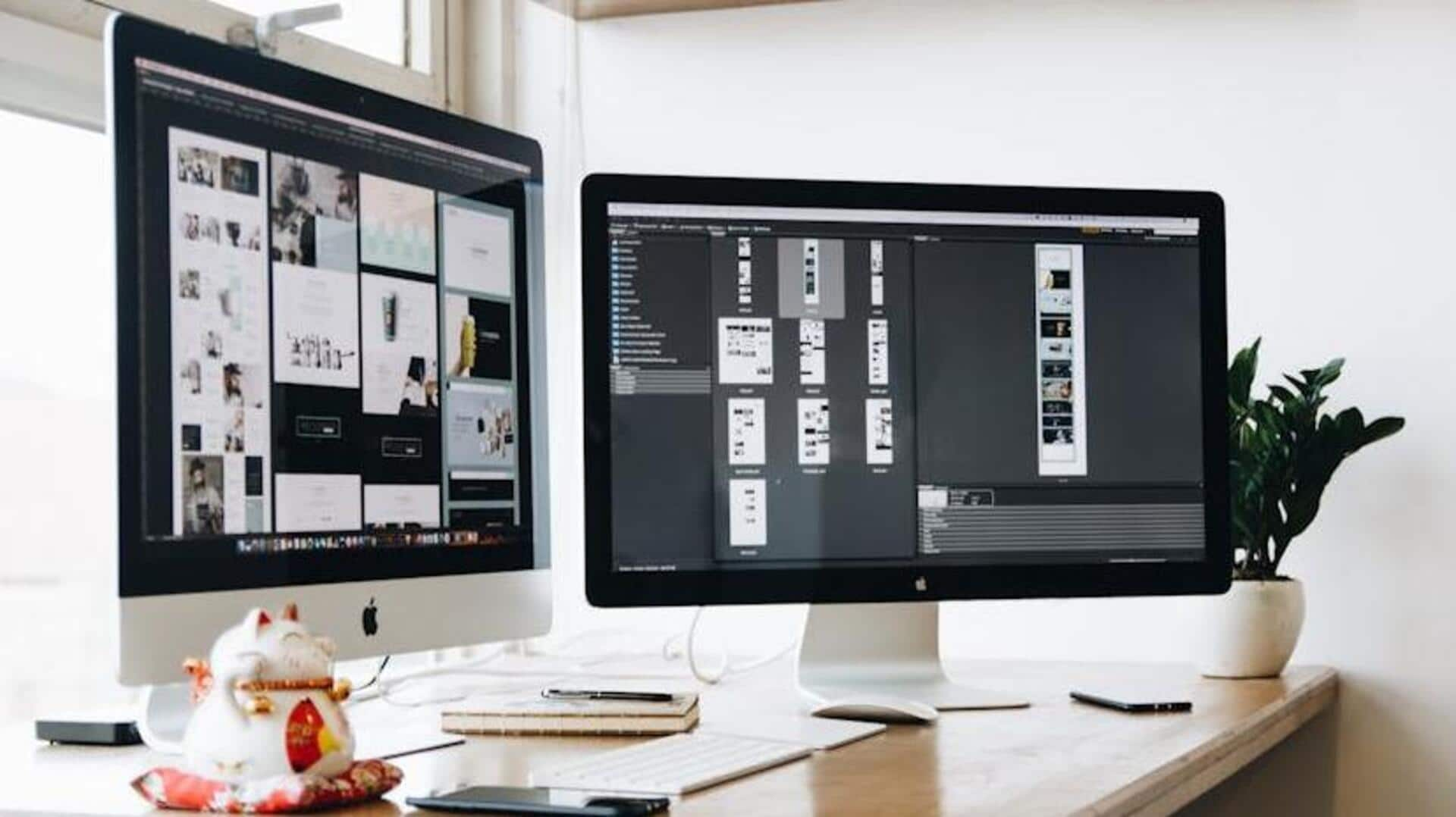
How to calibrate your monitor for graphic design
What's the story
If you are a graphic designer, you want your colors to be spot on.
Calibrating your monitor ensures what you see on your screen matches the final product, whether it is printed or viewed on another device.
With a few easy steps, you can achieve consistent and true-to-life colors, taking your designs to the next level.
Basic setup
Understand your monitor's settings
Understand your monitor's basic settings before calibrating with tools and software.
Adjust brightness to a comfortable level. For graphic design, aim for 120-140 cd/m^2.
Set contrast high enough to distinguish similar colors without straining your eyes.
For color temperature, choose 6,500 Kelvin. This setting replicates daylight.
Making these adjustments forms the basis for accurate color representation.
Hardware calibration
Use calibration tools
Consider purchasing a hardware calibration tool for the most accurate adjustments.
These gadgets are placed on your screen and they work in tandem with software to automatically analyze and adjust colors, brightness, contrast, and gamma.
Choices like the X-Rite i1Display Pro and Datacolor Spyder series fall between $100 and $250, but they deliver a level of accuracy that manual settings can't match.
Environment setup
Adjust according to ambient light
The surrounding light in your workspace can greatly influence your perception of colors on your monitor.
If possible, manage lighting conditions by utilizing blinds or curtains to minimize daylight and selecting bulbs with neutral light for evening work.
Plus, calibrating your monitor under the same lighting conditions you'll be working in most often ensures color consistency across different times of day.
Maintenance routine
Regularly re-calibrate your monitor
Monitor calibration isn't a "set it and forget it" affair.
To maintain color accuracy over time, you need to re-calibrate your monitor every two months or whenever there are significant changes in your working environment's lighting conditions.
This regular maintenance accounts for the natural shifts in display performance and ensures your color workflow remains reliable.
Software options
Utilize software calibration solutions
If hardware calibration tools are too expensive, you can start with software solutions.
Both Windows and macOS come with built-in display calibration wizards.
They'll walk you through tweaking gamma, contrast ratios, and color balance by relying on your eyes to judge visual prompts.
While not as accurate as hardware calibrators, they're a great starting point for beginners looking to understand what their monitor can do.